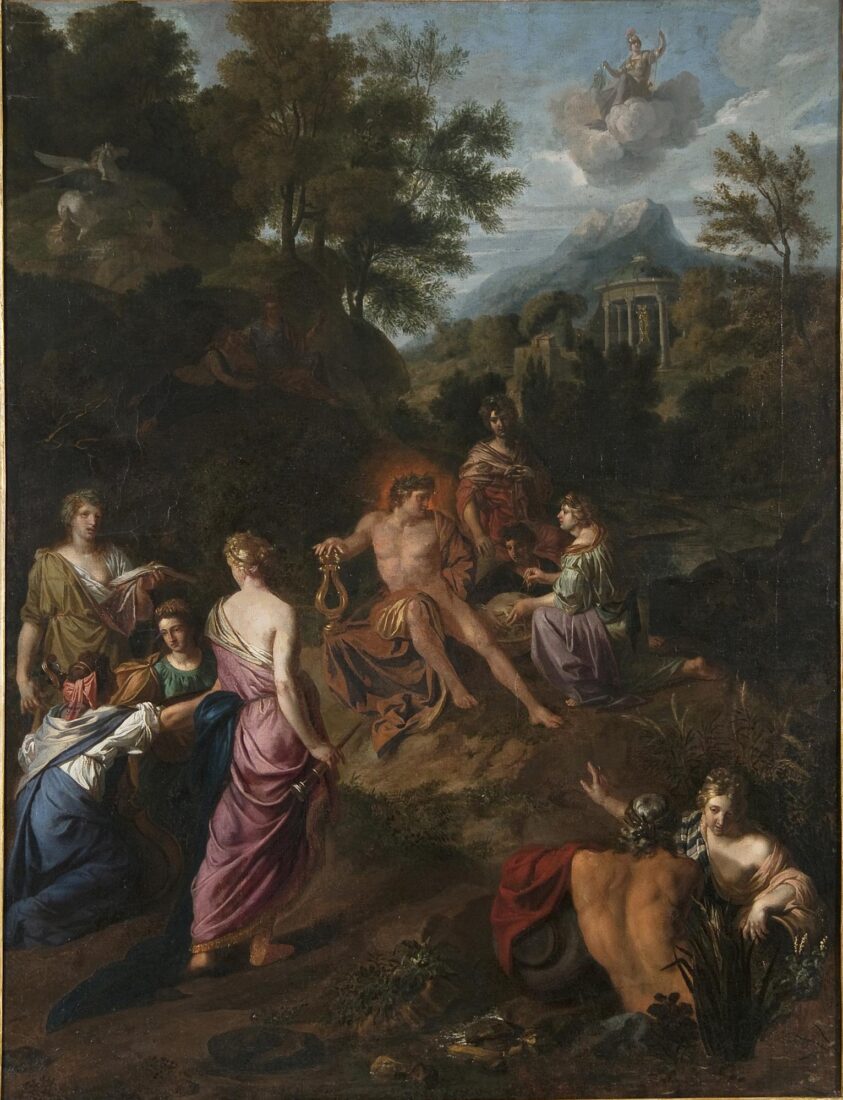We use cookies to make our site work properly, to personalize content and ads, to provide social media features and to analyze our traffic. We also share information about how you use our site with our social media, advertising and analytics partners. Read the Cookies Policy.

Lairesse Gerard de, attributed (1640 - 1711)
Minerva Visits the Muses (or Parnassus), ca. 1700
Oil on canvas, 163 x 125 cm
Donated by Spyros and Eirini Delaportas
The subject of this painting was inspired by the fifth book of Ovid’s “Metamorphoses”, which speaks of Athena’s arrival at Helicon where she asks the Muses to show her the new spring which gushed forth from the spot where Pegasus “with his hoof of horn opened the earth” (V, 250-260). The goddess appears in a cloud which commands the holy mountain on which the Muses are gathered around Apollo. To the rear left, Pegasus “the winged son of Medusa” can be seen ready to fly away. The spring is represented by two young female figures to the right, on the primary plane, holding two bags from which water is running. The scene is set in a mountainous environment in which can be seen shepherds’ huts and a round temple.
The noteworthy inventiveness displayed in the work’s conception is overshadowed, unfortunately, by the painting’s poor state of preservation; the painted surface has itself sustained considerable damage while the more general decline observed in the pigment has lessened the effect of the contrasts of the chiaroscuro. Despite these problems, the painting remains an important source of testimony to the classicism that the painters Claude Lorrain, Gaspar Dughet and Nicolas Poussin “imposed” through their painting, a form of expression which characterizes the French-Flemish School of the final quarter of the 17th century. A similar color scale as well as an analogous literary inspiration characterizes the work of Gerard de Lairesse, a painter from Liege, whose fame was in large part due to his unflagging inventiveness and dexterous execution. Works such as “The Allegory of the Benefits of Peace” (The Hague, Gemeentemuseum) or “Spring Sacrifice” (Potsdam-Sanssouci, Staatliche Schlosser und Garten), are characterized, just like the painting at the National Gallery, by a host of elegant figures and a palette both translucent and exceptionally sensitive. The same painter (Lairesse) also did another version of this subject (Dresden, Staatliche Kunsthalle) while a third from 1665 is mentioned by Arnold Houmbraken (“De Groote Schouburgh der Nederlandsche Konst-Schildes en Schilderessen”, Amsterdam 1718-1721).
The work attributed to Gerard de Lairesse must with the greatest possible caution be dated later than the above mentioned works, to around 1700.

